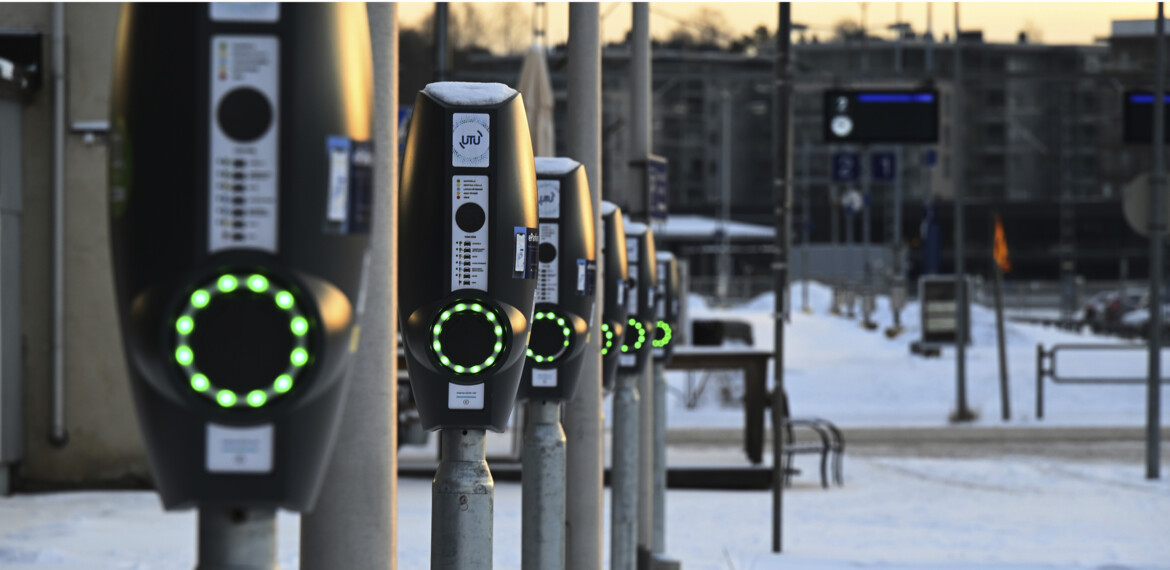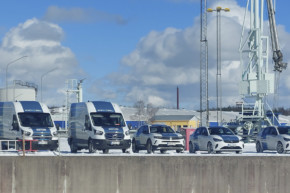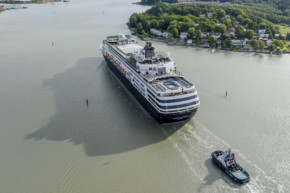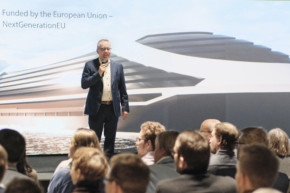Port of Turku aims at European top class in carbon neutrality
The Port of Turku has signed a climate commitment by which it joined the EU’s most highly regarded green cities. But what means are required for implementing the ambitious target for carbon neutrality in the everyday operations of the Port?

The City of Turku’s ambitious goal for carbon neutrality has been noted at the European level. Turku was selected among one hundred EU cities, all aiming to be carbon neutral by 2030 at the latest. At the same time, these cities can set an example for others in environmental work.
Port of Turku Ltd joined this group of cities in the autumn of 2023 by signing a climate agreement.
But how is the Port planning to reach the European top class in the race for carbon neutrality?
“We have to focus on the right things. They come with a cost and that, of course, stings, but it shows that we are serious about what we do. The Port does not practise unnecessary greenwashing”, says Erik Söderholm, Managing Director of the Port of Turku.
Changes are being implemented all the time
The Port of Turku has already done a great deal. The discounted vessel charges on environmental grounds alone have encouraged shipping companies to more ecological operations with hundreds of thousands of euros every year.
The carbon dioxide emissions resulting from the Port’s operations are included in the goals of the actual climate commitment.
“The biggest of them are electricity, heating and fuels. Turku produces district heat using renewable fuels, our passenger cars are electrically powered, and other machines and vehicles run on renewable diesel. A large part of our warehouses are not heated, and most of the rest of the buildings are heated with district heat. Only a few buildings still have a boiler which can use biofuels”, says Markku Alahäme, Technical Director.
Furthermore, a new electrically powered light truck with a loading platform and crane will arrive in the Port in February.

The flow of the River Aura causes extra work
In addition to regular emissions, the Port of Turku has to deal with an exceptional challenge compared to other Finnish ports. Soil is gradually filtering in the port area from the River Aura, at a rate of some 30,000–40,000 cubic metres in five years.
“It must be dredged, otherwise big ships cannot sail here”, the Managing Director says.
Previously the soil was disposed of in the Airisto sea area where e.g. solids were spread with the dredging masses. That is no longer done, but the dredging masses are disposed of on land in the Lauttaranta district in accordance with the principles of a circular economy. The cost is around 300,000–400,000 euros per year.
Mr Söderholm commends the shipping companies that have joined the climate project as well as other partners. You cannot save the environment on your own.
“Ahola Transport, for example, takes the environmental issues seriously. They have a smart approach. DB Schenker has also made big changes, and Meriaura has been using bio-based oil for a long time”, Mr Söderholm says.
Text and photos: Sari Järvinen
Port of Turku’s climate deeds
- Port of Turku’s climate deeds
- Involved in regional air quality monitoring
- The lights of light masts are dimmed in the night-time
- Buoy lights are powered by solar panels
- Digitalisation reduces energy consumption
- Automooring on Viking Line’s quay
- Waste water from vessels is drained into the city’s waste water system
- Food waste from vessels is used to make biogas




